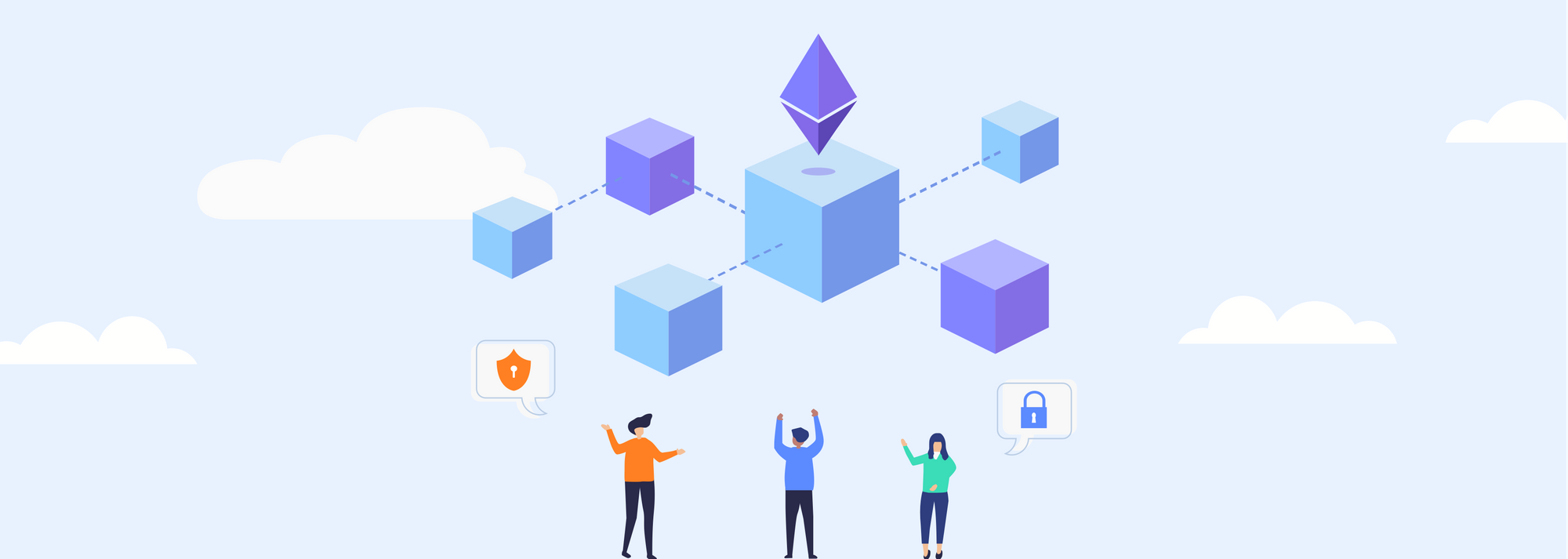If you’ve ever created a wallet with a client-side interface like MEW and read through the warnings, or contacted wallet support with questions about your account, you are likely to have come across the phrase “We are not a bank.”
What exactly is meant by that? After all, you are well aware that you are not interacting with Citibank, Chase, or any other private bank of your choice.
Why do some crypto services make a point of reiterating this statement?
Why is it that other crypto services don’t mention this at all?
Why does it even matter in this context?
Banking expectations
In the modern Western world, many new crypto users come with a history of using online banking platforms on a daily basis and, understandably, have similar expectations with regard to crypto wallets.
Some of these expectations may include: 24-hour customer service, help with account management, password resets, fraud alerts, the possibility of freezing or reversing transactions in response to fraudulent activity, and the understanding that the bank will take responsibility for an unexplained loss of assets.
Even unbanked users, who don’t have the online banking experience as a reference, sometimes seem to expect an ultimate authority on the other end of the customer service line – someone who can modify their wallet settings, adjust balances, and reset access information remotely.
BYOB: Be your own bank
Overall, very few beginners are aware of their personal role in crypto management. One of the greatest advantages of crypto is being your own bank, which means no one has control over your assets except you. On the flip side, this also means that you are taking on a lot of the responsibility for the security of your assets.
It would be perfunctory, not to mention obnoxious, to say: “it’s not a bug, it’s a feature.” Without a doubt, most crypto services have a long way to go before they can be considered truly user friendly. However, some aspects of blockchain technology and self-custody of cryptocurrency are intentional, unavoidable, and will always be different from the banking model.
It’s important to keep in mind that being your own bank is only truly possible with decentralized, non-custodial services. Centralized wallets and exchanges, like Coinbase, Binance, or Robinhood, retain control over users’ assets and, for that reason, can provide a more custodial, bank-like experience. Client-side, self-custodial wallets like MEW give the user full control over their keys and assets, giving full independence, but also requiring more agency from the users themselves.
We are not a bank because…
There is no account management
Client-side services don’t collect any user information (no name, no phone, no email, no IP address or physical address). There is no ‘file’ on the user and no account to manage. Customer support can’t look into wallets or adjust settings, reset passwords, or ‘fix’ balances. Since there is no information on users, non-custodial wallets can’t investigate scams or figure out the identity of the phishing address owner.
However, the fact that no one is managing your account also means that no one can block or freeze the assets, and you don’t need to wait for anyone’s approval on transactions, no matter the amount that you are sending or the location of the recipient. There are no banking holidays or service interruptions, and no one can prevent you from using or withdrawing your assets – no matter what is happening with the stock market or the political environment.
There are no servers or 'safes'
Your cryptocurrency is always on the blockchain, while various services and interfaces help you interact with and reassign ownership of it. Crypto is never ‘moved’ from one storage place to another.
It’s not ‘in’ your hardware wallet, it’s not ‘on’ your browser interface wallet, there are no servers or digital 'safes' where stores of currency are kept. All wallet apps and interfaces are just various ways of accessing those cryptocurrencies on the blockchain whose ownership is assigned to your wallet.
What does that mean in practical terms? A client-side wallet does not have your assets, can’t use them, can’t take your assets and lend to others and then run out when you need to withdraw them.
Hackers don’t hack client-side wallet companies, because there is nothing to hack: no store of data, no store of currency. When loss of assets happens, it happens because individual wallet access information was obtained right from the user – through theft of improperly stored keys, phishing, social engineering, or unintentional user error.
There is no single point of failure. Even if customer service stops responding, the site disappears, and the wallet company goes out of business – as long as you have your access information (your wallet keys), you can use it on another interface and your assetss are still there, on the blockchain.
Blockchain rules apply
There are a couple of reasons why blockchain technology is the big deal that it is, and they are directly related to the un-bank-ness of it.
Blockchain is a decentralized ledger of information that can’t be changed after the fact – for better or worse. Nobody can go back and fake something that didn’t happen, or erase something that did happen. For the same reason, transactions to the blockchain are irreversible.
Nobody can freeze or cancel transactions that have gone through, even if it was in error or as a result of a scam. Custodial services can insure themselves against such cases and ‘recover’ user assets by paying them from insurance, but even they are not able to reverse transactions that have been added to the blockchain.
On the upside, the blockchain doesn’t care where you are sending your assets, why, or how much. The speed of transaction depends only on the congestion of the network and can take minutes, without requiring any permissions or checks. Transactions costs will vary depending on the blockchain, but they usually end up being significantly lower than bank wire fees.
You are the only one who has access
In the traditional banking model, the custody of your assets is shared between you and the bank, where the bank has more power. Your assets can be frozen, your transfers can be restricted, your credit score can substantially affect your life, and in the worst case scenario, the bank can default.
With client-side, self-custodial crypto wallets, you are the only one who makes the decisions and no one can restrict your access to financial services and products. At the risk of dragging out a tired cliché, with that freedom comes responsibility – both for your security and for the consequences of those decisions.
Custodial crypto services don’t need to emphasize that they are ‘not a bank’ because in fact, they are a bit like a bank: centralized, retaining custody of your keys and assets, but also helping you manage them.
Perhaps in the future, traditional banks and crypto services will be able to give users the best of both worlds, combining customer freedom and customer support in unprecedented ways. Until then, you have a choice whether to use client-side, self-custodial wallets, or centralized, custodial services. Both options are useful for specific needs and scenarios.
Just keep in mind what it means when wallets say ‘we are not a bank’, and understand that they really do mean it!
Read to get started with the wide world of crypto? Download MEW wallet app on iOS or Android, or check out the Enkrypt multichain browser extension!

